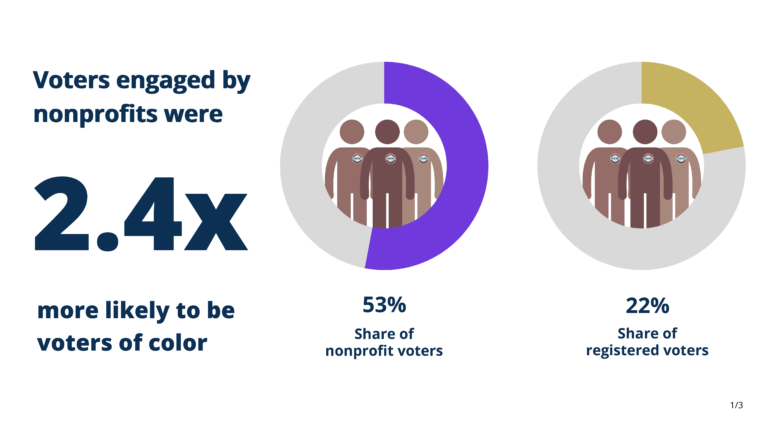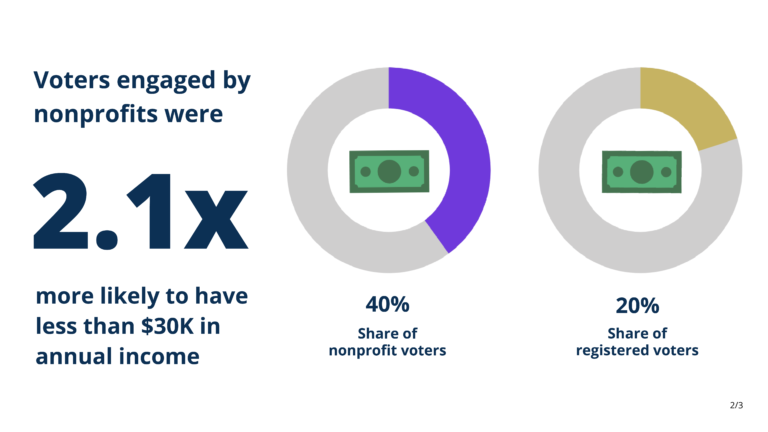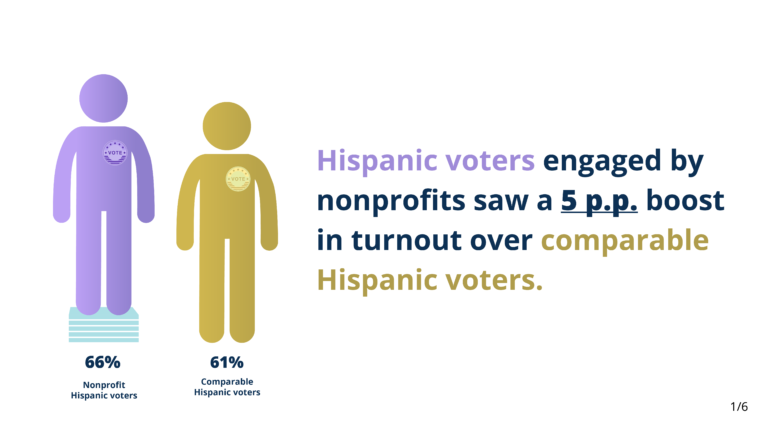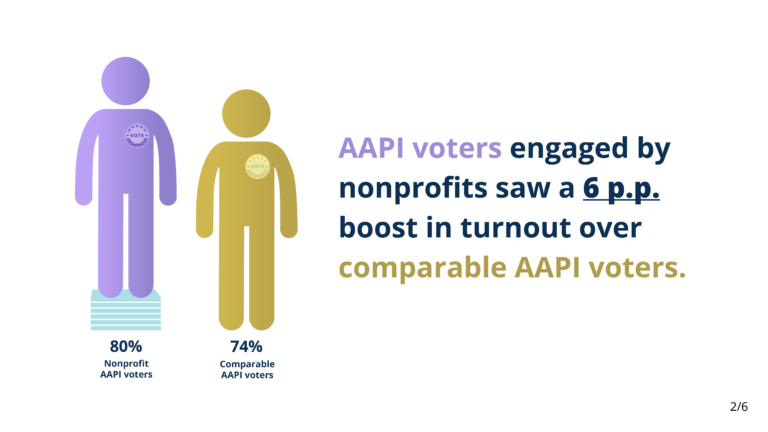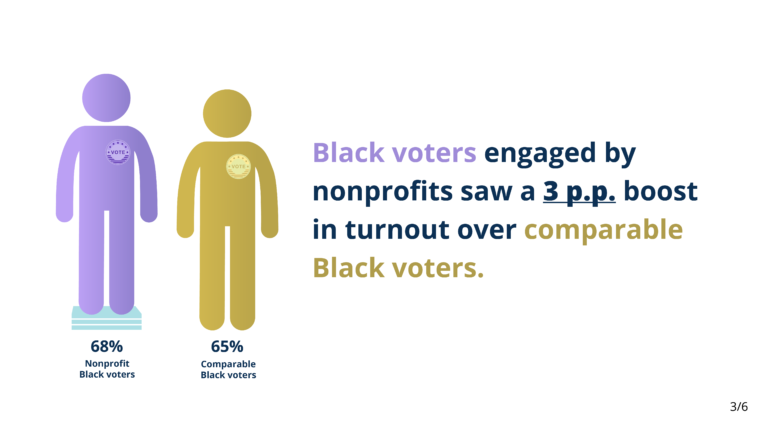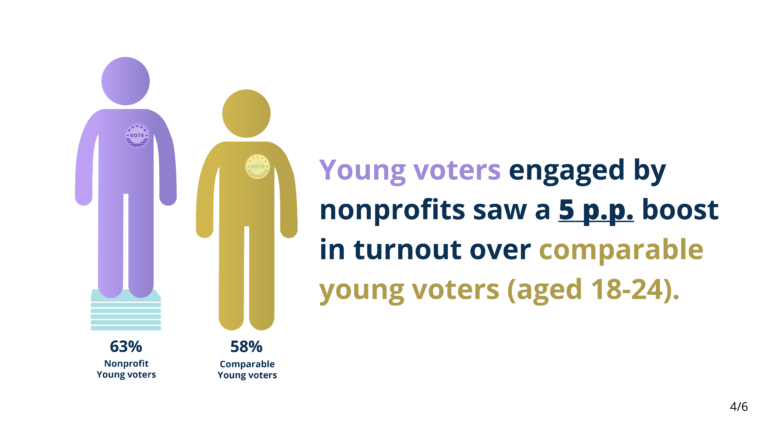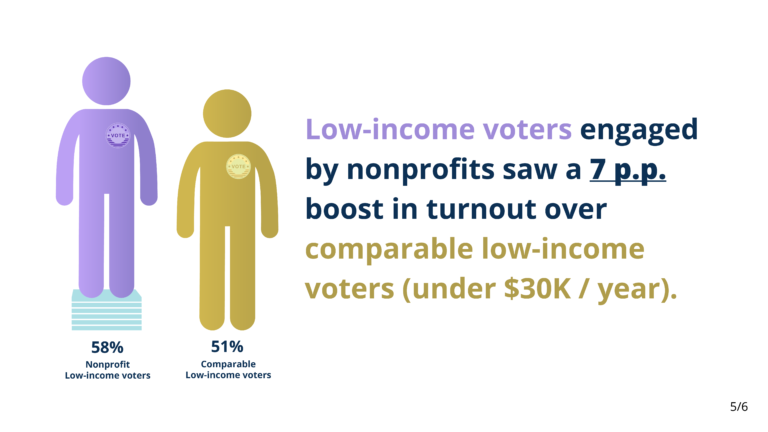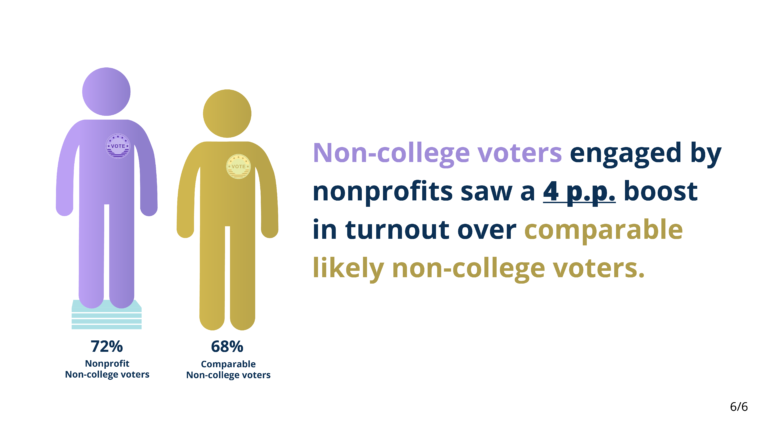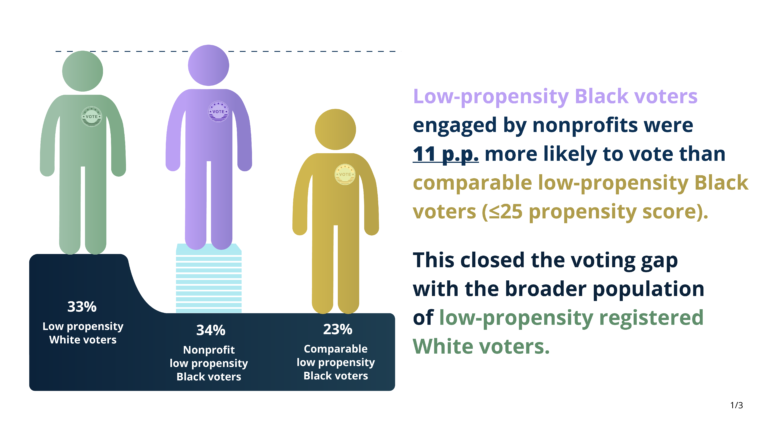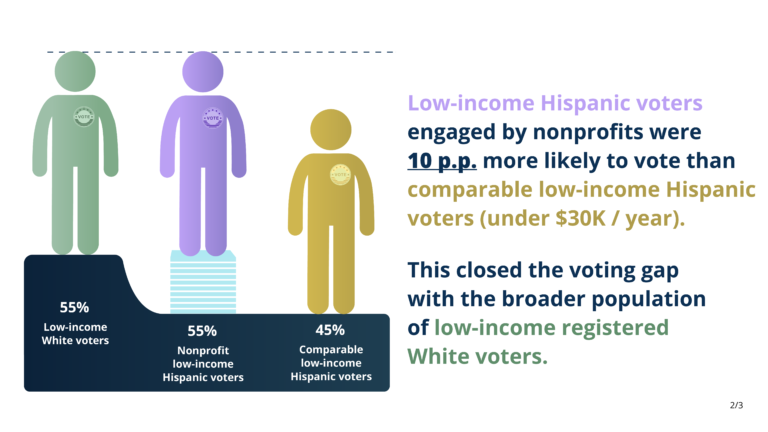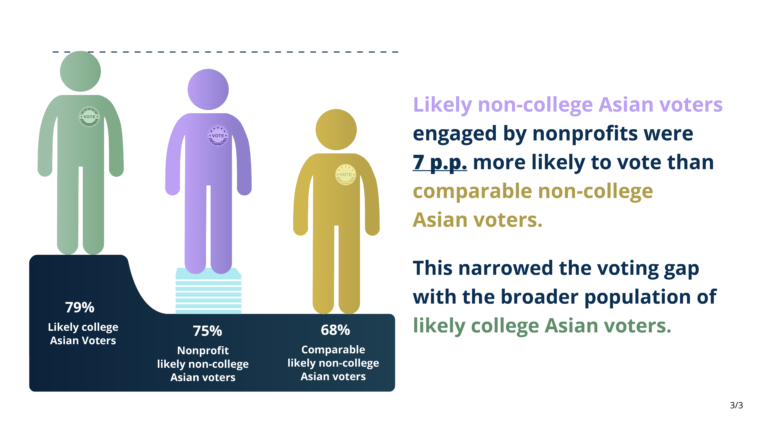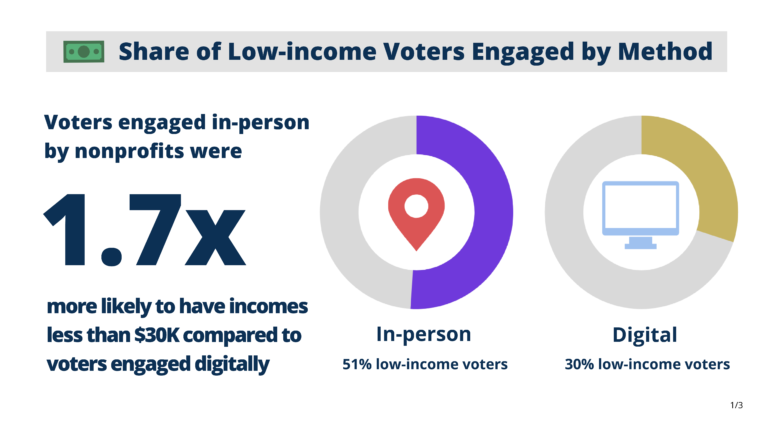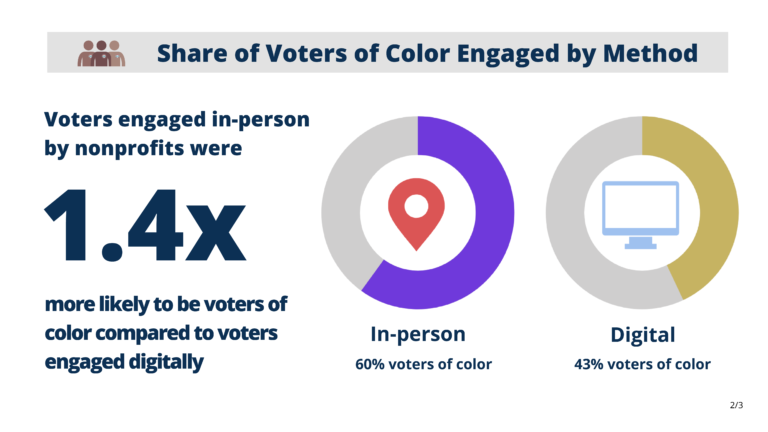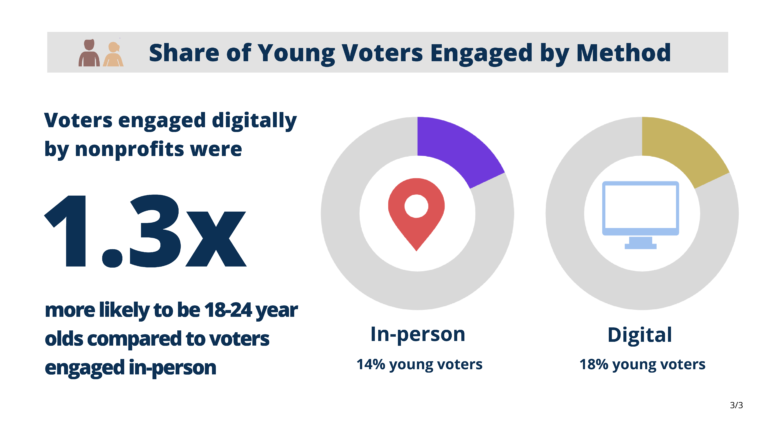
Scroll through the findings by using the arrows. You can download graphics from our social assets page and learn more about how we conducted this research in the methodology.
Nonprofits Reach Underrepresented Voters
Voters engaged at nonprofits are more likely to be from communities historically underrepresented in our democracy, including people of color, low-income earners, and young voters.
Demographics of Voters Engaged at Nonprofits vs. Registered Voters in the Same States
Voters Engaged by Nonprofits Had Higher Turnout Rates
2020 was a record-breaking year for voter engagement work and election turnout despite the pandemic. With election interest at peak levels, people voted at rates not seen in over 100 years! This highly saturated environment meant that any one group’s efforts would have a smaller relative impact than in other years.
Nonetheless, the voters engaged by nonprofits showed a measurable turnout boost of 3 percentage points (p.p.) over comparable voters (75% vs. 72%). Comparable voters were matched by characteristics like age, race, sex, marital status, income, propensity, education, and county. The turnout boost was highest among low-income earners, people of color, those without college degrees, and young voters resulting in a more representative electorate.
Turnout Boosts Among Demographics Groups
Nonprofits Closed Voter Gaps to Make Elections More Equitable
When examining overlapping demographic groups, the turnout boost experienced by nonprofit-engaged voters was often even higher, in some cases even closing the gaps.
Progress Towards Closing Voter Turnout Gaps
Low Propensity Voters = High Potential Voters
Voter files used by campaigns include propensity scores of 0 to 100 as a predictor of an individual’s likelihood of voting, with 100 being most likely. The scores are based on voting history and other factors. Campaigns typically only target voters with mid-to-high propensity scores because they are trying to win elections with limited resources. For nonprofits, voters with a low propensity score aren’t non-voters—they are high potential voters who stand to benefit the most from being contacted.
Voter engagement demonstrates the commitment of your organization to long-term, structural change in addition to meeting immediate needs.
As a 501(c)3, you have a unique opportunity to build your influence and support for your policy solutions by connecting community members to the representatives who need to hear from them. When representatives see the trust, access, and mobilizing power you have, they’re incentivized to be more accountable to you.
The Benefits of Face-to-Face Voter Engagement
Many nonprofits shifted to online strategies while others continued in-person activations with social distancing, PPE, and other COVID-safe measures. In-person engagement by nonprofits was more likely to reach low-income voters and people of color than digital outreach.
Voters who filled out paper registration forms, pledge-to-vote cards, and ballot request forms were engaged in-person. Voters who completed these forms digitally were primarily engaged online without face-to-face contact, though some were done in-person through tablets. About 41% of all voters engaged were through these in-person, paper means and 59% via the digital ones. 75% of surveyed sites conducted at least some in-person voter engagement.
Voters Engaged by Nonprofits In-Person vs. Digitally
As public health guidelines shift, it’s imperative that nonprofits renew in-person voter engagement work whenever possible to ensure the most marginalized are not left behind. Digital outreach has a complementary role but is not a substitute for in-person work.
